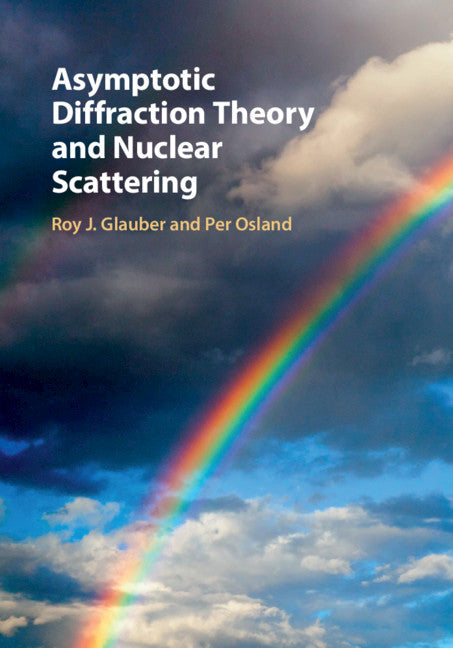Freshly Printed - allow 4 days lead
Couldn't load pickup availability
Asymptotic Diffraction Theory and Nuclear Scattering
Presents an explanation of diffractive nuclear scattering in terms of semi-classical trajectories.
Roy J. Glauber (Author), Per Osland (Author)
9781107104112, Cambridge University Press
Hardback, published 3 October 2019
206 pages, 125 b/w illus. 1 table
25.3 x 17.8 x 1.3 cm, 0.55 kg
Scattering theory provides a framework for understanding the scattering of waves and particles. This book presents a simple physical picture of diffractive nuclear scattering in terms of semi-classical trajectories, illustrated throughout with examples and case studies. Trajectories in a complex impact parameter plane are discussed, and it stresses the importance of the analytical properties of the phase shift function in this complex impact plane in the asymptotic limit. Several new rainbow phenomena are also discussed and illustrated. Written by Nobel Prize winner Roy J. Glauber, and Per Osland, an expert in the field of particle physics, the book illustrates the transition from quantum to classical scattering, and provides a valuable resource for researchers using scattering theory in nuclear, particle, atomic and molecular physics.
Preface
Acknowledgements
List of abbreviations
Part I. Introduction: 1. Overview and preview
2. Diffraction theory
3. Asymptotic diffraction theory
4. Two simple examples
5. Complex trajectories
6. Scattering from linear structures
Part II. Various Radial Fall-Offs: 7. Gaussian edge
8. Exponential edge
9. Sharper edges
10. Analytic variations
Part III. Composite Phase Functions: 11. Extended charges
12. Coulomb plus nuclear interactions
13. Smooth two-scale functions
14. Two Fermi functions
15. Different singularities
16. Summary
Appendix A. Partial waves and phase shift function
Appendix B. Iteration for stationary points
References
Index.
Subject Areas: Chemical physics [PHVQ], Particle & high-energy physics [PHP], Nuclear physics [PHN], Atomic & molecular physics [PHM]


